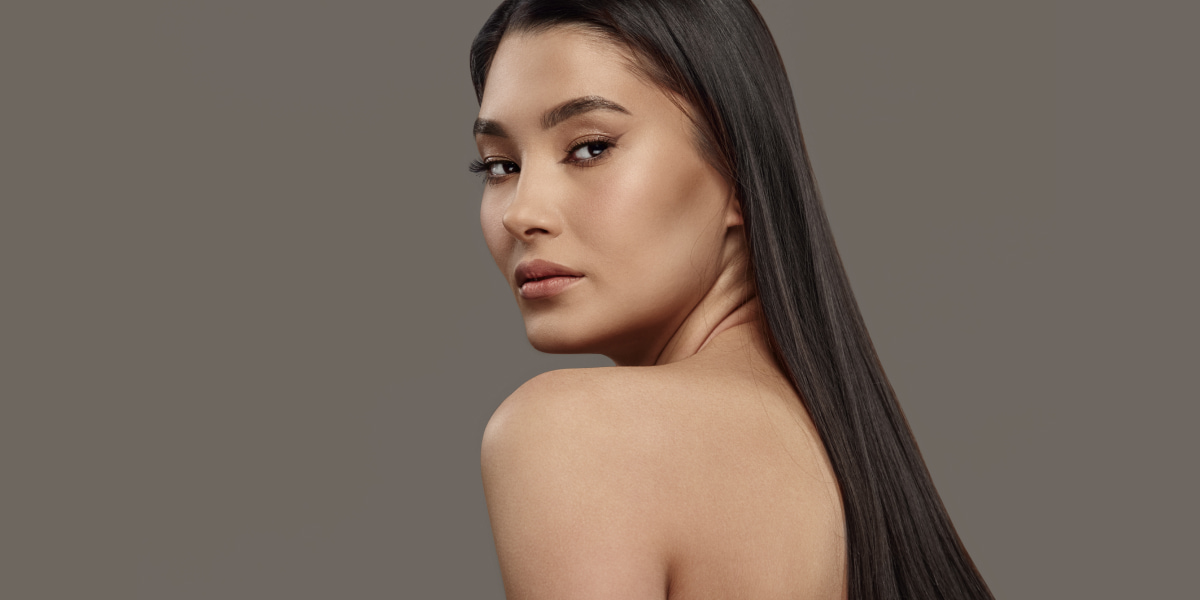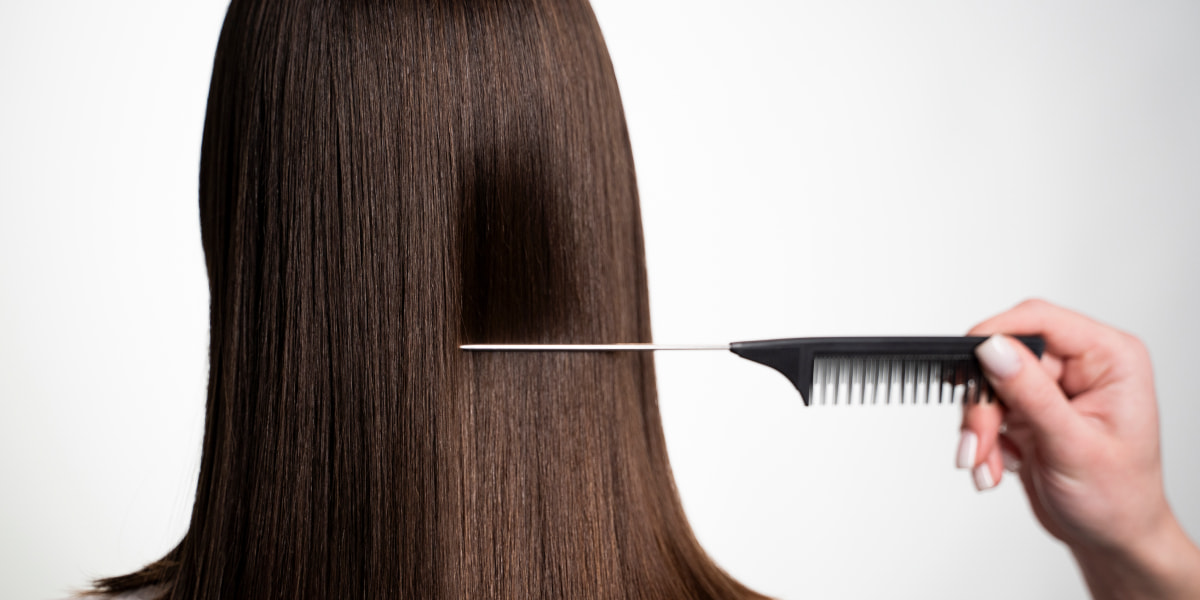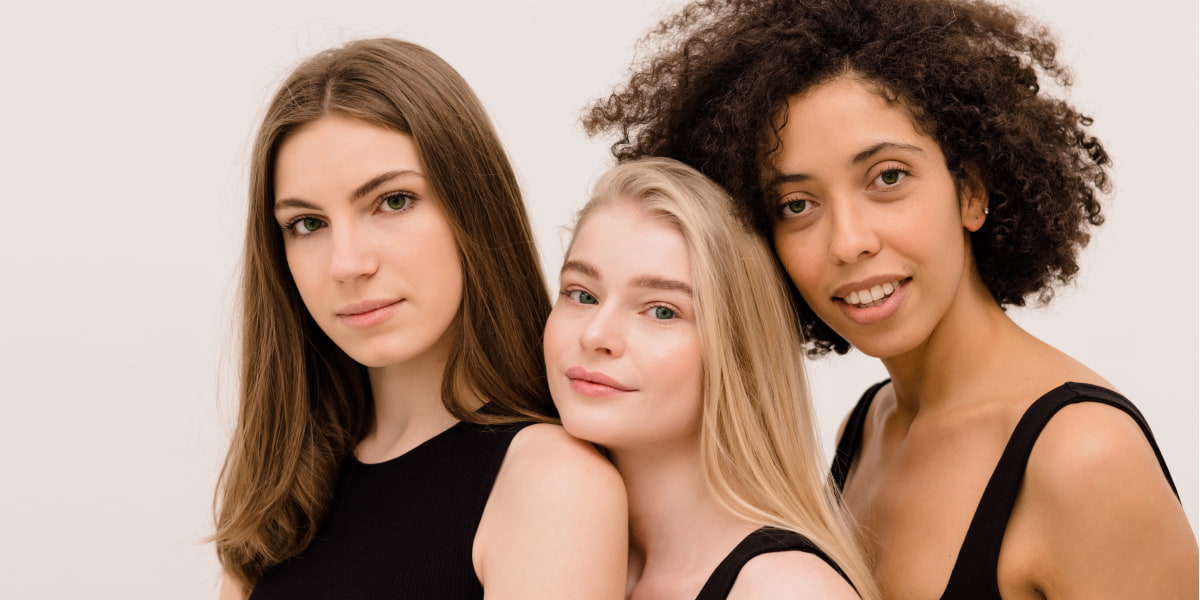Published on December 15th, 2022
Last updated on January 24th, 2023
How To Find Your Hair Type? Proper Guide On Types Of Hair Texture
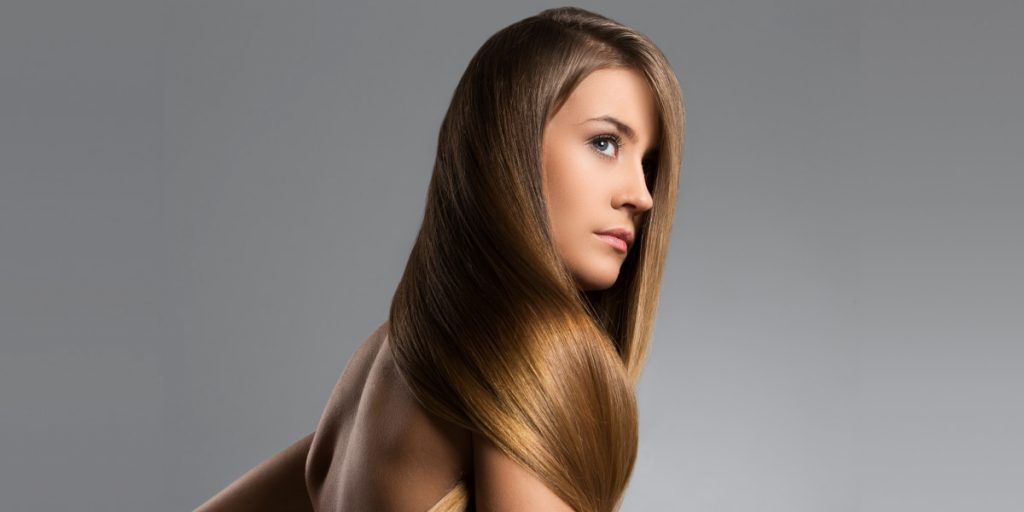
When it comes to hair care, there is a tremendous amount of information to absorb. The number of products and tips can be overwhelming. But you don’t have to worry! You need to know the answer to the question, “what is my hair type?” Knowing your hair type is the first step to finding the best products and hairstyles.
All women’s hair is different, so it’s crucial to find your hair type to treat it properly. Hair type depends on many factors, the main ones being its texture, porosity, and structure. These characteristics are laid down even before a person is born. They also largely depend on genetics. The quality and condition of our hair can change our lives. And our hair care should adjust accordingly.
Below we will tell you how to find out your hair type. Taking the proper care of your hair type will lead to healthier and shinier locks. So, without further ado, let’s get started!
Hair Texture
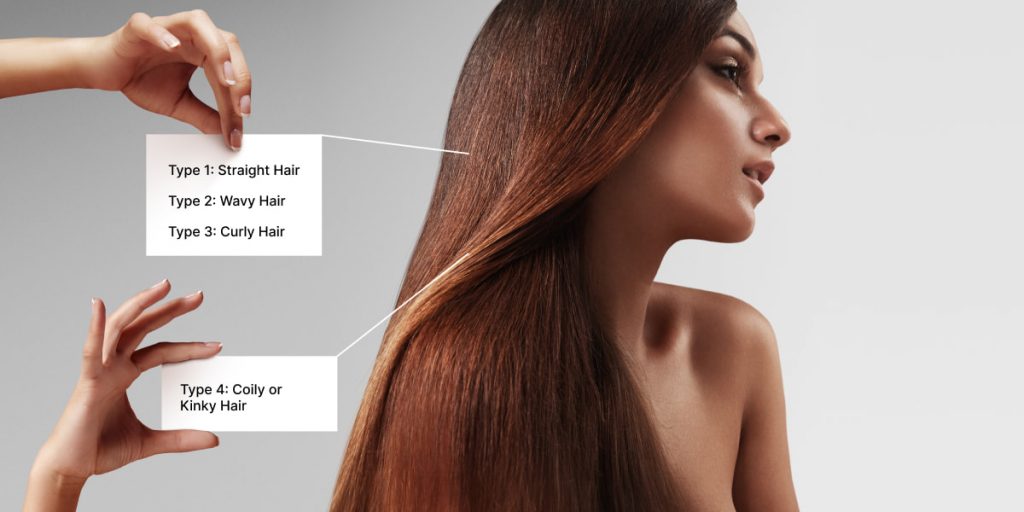
So, you have decided to determine your hair type. It is the right decision. After all, when you know your hair type, you will find the types of perfect styling and products for them. The first step to determining your hair type is texture.
Hair texture is, first and foremost, the feel of your hair. But the texture is also the appearance of your strands. There are several basic categories of hair texture:
- straight;
- wavy;
- curly;
- coily, or kinky.
We suggest taking a closer look at each type. That way, you can’t go wrong when determining a woman’s hair type:
Type 1: Straight Hair
This type of hair stays straight regardless of the environment. They are smooth but quickly become greasy because of their smooth surface.
Many girls dream of having this type of hair texture. All because even though hair gets dirty faster, it has its advantages. This type of hair has a soft and silky texture. They are incredibly shiny. You won’t find a single curl, completely straight as an arrow.
Type 2: Wavy Hair
This type of hair is something in between. That is, it is neither straight nor curly. Most of all, you can find this hair type among European women. The advantages of this type of hair can highlight that the hairstyles perfectly hold on. You can divide type 2 into three subtypes:
- Type 2A – fine wavy hair.
- Type 2B – medium wavy hair.
- Type 2C – thick wavy hair.
Most people with wavy hair have a combination of Type 2A and Type 2B – fine/medium wavy with some straight sections.
Type 3: Curly Hair
This type has well-defined, springy curls. They can range from tight corkscrews to looser spirals, more like waves. These curls can be found all over the head, with lots of volume and bounce! It has a higher density compared to wavy and straight hair. Type 3 is again divided into three subtypes:
- Type 3A – loose curls.
- Type 3B – medium curls.
- Type 3C – tight curls.
As beautiful as this type is, it has a drawback. You probably have a hard time brushing your hair, and this hair type is complex styling. This type of hair tangles.
Type 4: Coily Or Kinky Hair
These coils are what most people think of when they hear “natural hair.” Coily or kinky hair is very tightly coiled and springy. It tends to be more fragile due to its tight bend, which can break easily when not well taken care of. The curls resemble a ‘Z’ shape. This hair type, we can divide into three sub-types:
- Type 4A is soft.
- Type 4B is wiry.
- Type 4C is extremely wiry.
Remember that everyone’s hair is unique. So don’t be afraid to experiment with different styles and products until you find what works for you.
Hair Structure
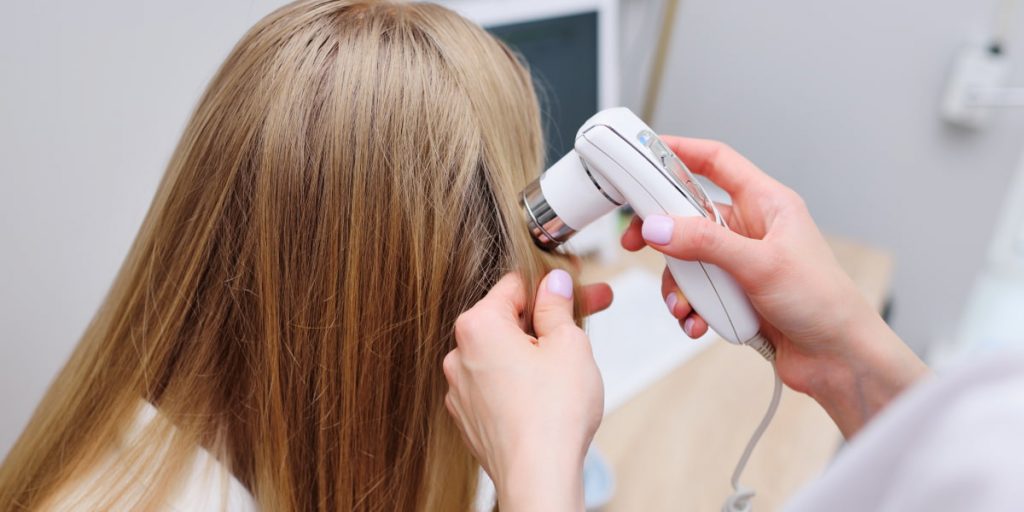
When we talk about hair structure, we refer to the thickness of the individual strands. Hair structure can range from thin to thick to coarse female hair types. It gives the hair volume and helps determine which products are best. In the world, people only distinguish between 3 types:
- Fine hair.
- Medium hair.
- Coarse hair.
Fine hair types of styling have the thinnest diameter of strands. Usually, this type is close to the scalp. Fine hair is more prone to damage because the cuticles are more easily damaged.
Medium hair is pretty thick and thin. They are somewhere in between. This type is the most common among the entire population of the planet.
Coarse hair tends to have a much larger diameter. Thick/coarse hair can show signs of frizz because of its size and shape. But they are more resistant to styling. But you will need products designed specifically for this women’s hair type.
How To Determine What’s My Hair Type And Structure
To determine the structure of your hair, run a fingertip over a strand of hair:
- You probably have fine hair if it feels smooth and invisible to the touch.
- You may have medium hair if it feels slightly rough to the touch.
- If it feels thick or has more resistance when you run your finger over it, you probably have coarse/thick hair.
Hair Porosity
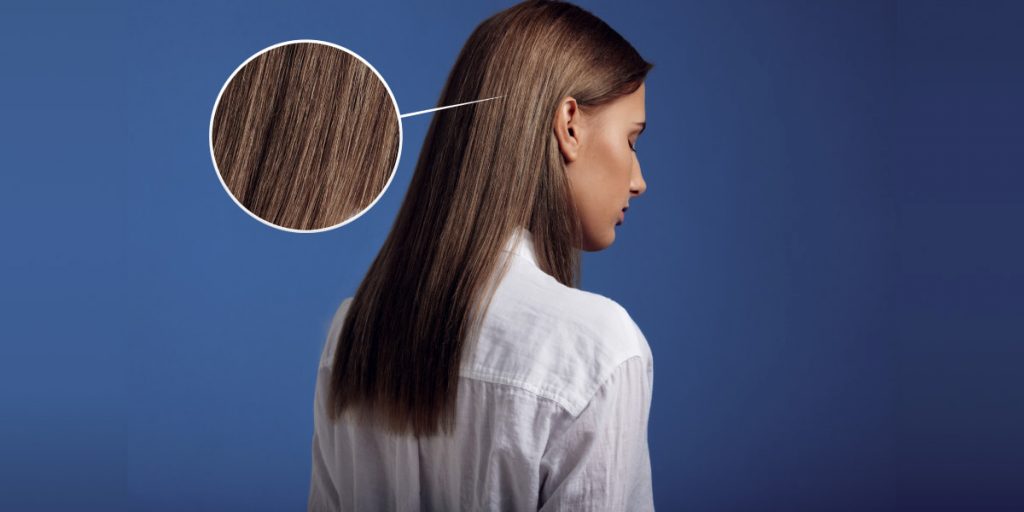
Another factor that determines your women’s hair type is porosity. Hair porosity is the ability of individual strands to absorb moisture. It determines how much water and oil your strands will absorb and retain.
Highly porous hair is what’s known as “thirsty hair.” This type of hair tends to absorb a lot of moisture and oils. But it also has difficulty retaining it due to the raised cuticles.
Low porosity hair is what’s known as “resistant hair.” This type of hair has tightly closed cuticles that don’t easily let anything in or out. As a result, this type of hair usually won’t take up much product or moisture.
Normal porosity hair is what falls right between these two extremes. It can easily absorb and keep moisture. But it is not so much that the strands become weighed down with product or water.
Scalp Moisture
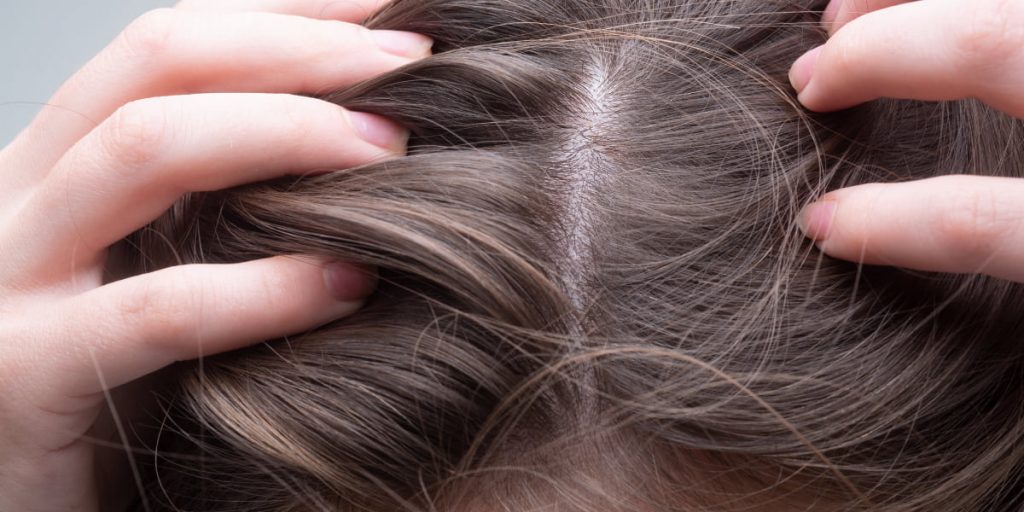
We all already know that your hair won’t be good if your scalp isn’t good. The condition of your scalp determines the health of your hair. That’s why you must pay attention to what’s going on with your hair.
If you have naturally oily hair and scalp, chances are you have low porosity. Then, you need hair styling products for people with that type of hair and scalp.
On the other hand, if you have a dry, flaky scalp, you may have high porosity. In that case, you need more moisturizers to keep your hair healthy.
How To Deal With Flaky And Oily Hair?
If you have oily hair and scalp: the best way to tame your mane is to use products designed for this type of hair texture. Consider ingredients such as:
- tea tree oil;
- witch hazel;
- aloe vera.
They work together. So they can balance the oils in the scalp and still provide adequate hydration.
If you have a dry or flaky scalp, consider products containing ingredients such as:
They help moisturize and nourish your skin without making it too oily.
Make sure that you use products that match your hair and scalp type. That way, you’ll get the best results when styling your hair!
Why Hair Type Charts Matter
Every hair type chart should also include the porosity factor, which determines how much moisture your hair will absorb and retain. Porosity refers to individual strands’ ability to drink and hold onto water or oils.
It is vital to remember that what works for one person may not necessarily work for another. So, finding what type of hair you have and what products best suit it is key to successful styling! Now that you know more about what your hair type is. And you know what types of products will help bring out their best. Now, it is time to style with the knowledge that you are correctly taking care of your hair!
Bottom Line
Now that you know more about what your hair type is. And you know what types of products will help bring out their best. Now, it is time to style with the knowledge that you are correctly taking care of your hair!
FAQ
How Can I Find Out What Type Of Hair I Have?
To find out what type of hair you have, run your fingers along a strand of hair. If it feels smooth and invisible, you probably have fine hair. You may have medium hair if it feels slightly rough to the touch. If it feels thick or has more resistance when running your fingers along it, you probably have coarse/thick hair.
Can You Get Waves With Any Hair?
Yes, you can! With the right hair products and styling tools, waves are achievable for any hair type. For example, try curl cream or mousse if you have fine to medium hair. If you have thick or coarse hair, try using a texturizing spray before adding it to your wave.
Can You Change Your Natural Hair Type?
No, you cannot change your natural hair type. To get the best style and health for your hair, it’s essential to use products specifically designed for your hair type. Doing so will help keep your hair healthy and looking its best!
Can My Hair Type Change Throughout My Life?
Yes, your hair type can change your life. It is due to various factors like hormonal changes and lifestyle choices. If you think your hair may have changed, it’s best to do a quick test to determine what type of hair texture you now have.


